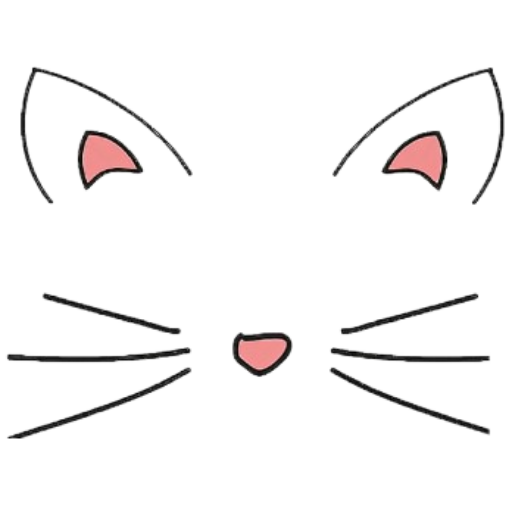The Feline Astronomers: Cats and Their Celestial Influence
- No Comments
In a world where cats have made their mark on numerous aspects of human life, from the arts to urban planning, it seems only natural that these enigmatic creatures have also cast their gaze skyward, influencing our understanding and appreciation of the cosmos. While it may sound fantastical, the connection between cats and astronomy runs deeper than one might expect, with a history that stretches back to ancient civilizations and continues to inspire stargazers today.
The relationship between cats and the stars can be traced to ancient Egypt, where cats were revered not only as guardians of the home but also as celestial beings. The goddess Bastet, often depicted as a lioness or a woman with a lion’s head, was associated with the sun and the moon, symbolizing the cycle of day and night. Cats, therefore, were seen as earthly emissaries of these celestial bodies, their nocturnal nature and reflective eyes seemingly capturing the light of the stars themselves. This reverence for cats as cosmic entities was not confined to Egypt; throughout history, various cultures have drawn connections between these mystical creatures and the heavens.
In more modern times, the association between cats and astronomy has taken on a more whimsical tone. The “Cat’s Eye Nebula,” discovered by German astronomer William Herschel in 1786, is so named because its intricate structure resembles a cat’s eye, with its swirling clouds of gas and dust creating a mesmerizing pattern reminiscent of the hypnotic gaze of a feline. This nebula, located 3,300 light-years away in the constellation Draco, continues to captivate astronomers and cat enthusiasts alike, serving as a cosmic reminder of the beauty and mystery that both cats and the universe hold.
Moreover, cats have found their way into popular culture’s depiction of space exploration. From the iconic Cheshire Cat in Lewis Carroll’s “Alice’s Adventures in Wonderland,” whose grin remains suspended in the sky even after its body vanishes, to more contemporary references in science fiction, cats often serve as symbols of the unknown and the mysterious, much like the vast expanse of the cosmos itself. This cultural symbolism reinforces the idea that cats possess an otherworldly quality, one that aligns them with the stars above.
In terms of practical contributions, cats have also played a role, albeit indirectly, in the development of astronomical technologies. The inspiration for the modern-day catadioptric telescope—a design that combines lenses and mirrors to reduce optical aberrations—can be traced back to the simple yet effective focusing mechanism of a cat’s eye. This type of telescope has become a staple for amateur astronomers, allowing stargazers to explore the night sky with greater clarity and precision.
As we continue to look to the stars for answers and inspiration, the influence of cats on our celestial pursuits remains a testament to their enduring mystique. Whether as symbols of the unknown or as muses for technological advancements, cats have left an indelible mark on the field of astronomy. As we gaze up at the night sky, perhaps we do so with a little more wonder, knowing that these enigmatic creatures, with their own connection to the cosmos, are perched beside us, sharing in the celestial marvels that unfold above.

In a world where cats have made their mark on numerous aspects of human life, from the arts to urban planning, it seems only natural that these enigmatic creatures have also cast their gaze skyward, influencing our understanding and appreciation of the cosmos. While it may sound fantastical, the connection between cats and astronomy runs deeper than one might expect, with a history that stretches back to ancient civilizations and continues to inspire stargazers today.
The relationship between cats and the stars can be traced to ancient Egypt, where cats were revered not only as guardians of the home but also as celestial beings. The goddess Bastet, often depicted as a lioness or a woman with a lion’s head, was associated with the sun and the moon, symbolizing the cycle of day and night. Cats, therefore, were seen as earthly emissaries of these celestial bodies, their nocturnal nature and reflective eyes seemingly capturing the light of the stars themselves. This reverence for cats as cosmic entities was not confined to Egypt; throughout history, various cultures have drawn connections between these mystical creatures and the heavens.
In more modern times, the association between cats and astronomy has taken on a more whimsical tone. The “Cat’s Eye Nebula,” discovered by German astronomer William Herschel in 1786, is so named because its intricate structure resembles a cat’s eye, with its swirling clouds of gas and dust creating a mesmerizing pattern reminiscent of the hypnotic gaze of a feline. This nebula, located 3,300 light-years away in the constellation Draco, continues to captivate astronomers and cat enthusiasts alike, serving as a cosmic reminder of the beauty and mystery that both cats and the universe hold.
Moreover, cats have found their way into popular culture’s depiction of space exploration. From the iconic Cheshire Cat in Lewis Carroll’s “Alice’s Adventures in Wonderland,” whose grin remains suspended in the sky even after its body vanishes, to more contemporary references in science fiction, cats often serve as symbols of the unknown and the mysterious, much like the vast expanse of the cosmos itself. This cultural symbolism reinforces the idea that cats possess an otherworldly quality, one that aligns them with the stars above.
In terms of practical contributions, cats have also played a role, albeit indirectly, in the development of astronomical technologies. The inspiration for the modern-day catadioptric telescope—a design that combines lenses and mirrors to reduce optical aberrations—can be traced back to the simple yet effective focusing mechanism of a cat’s eye. This type of telescope has become a staple for amateur astronomers, allowing stargazers to explore the night sky with greater clarity and precision.
As we continue to look to the stars for answers and inspiration, the influence of cats on our celestial pursuits remains a testament to their enduring mystique. Whether as symbols of the unknown or as muses for technological advancements, cats have left an indelible mark on the field of astronomy. As we gaze up at the night sky, perhaps we do so with a little more wonder, knowing that these enigmatic creatures, with their own connection to the cosmos, are perched beside us, sharing in the celestial marvels that unfold above.


